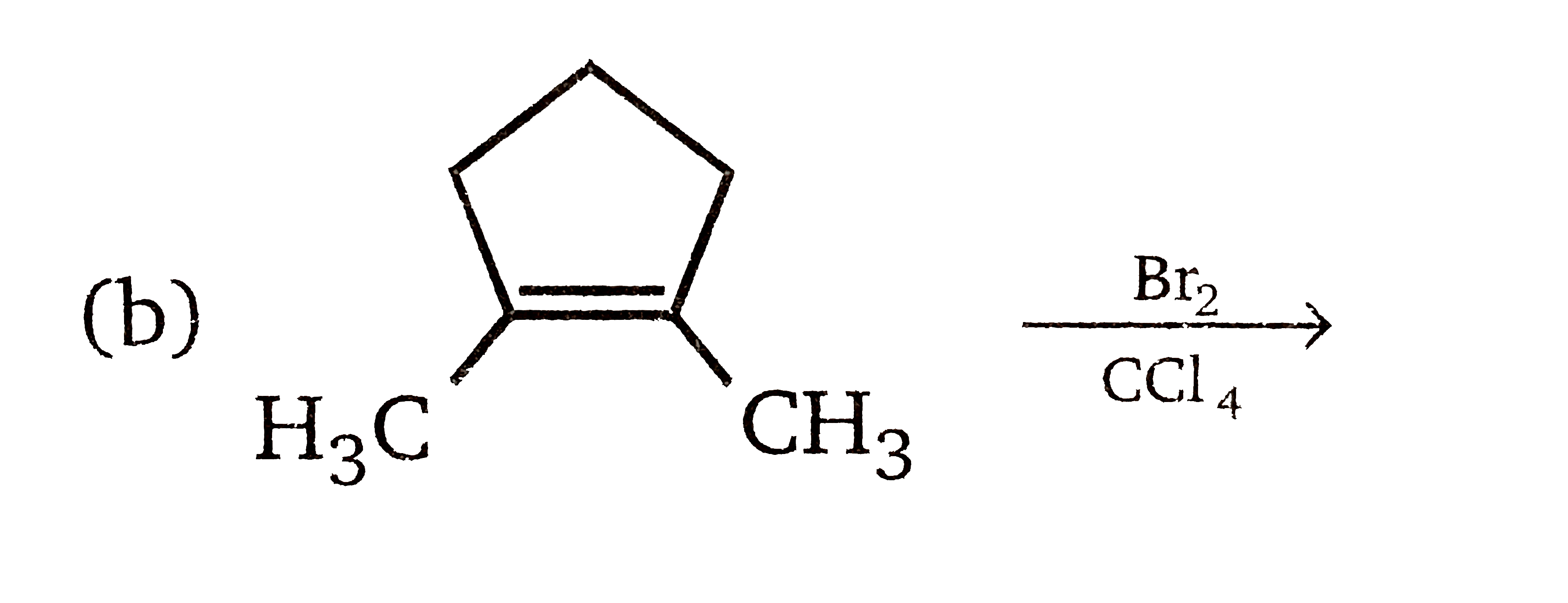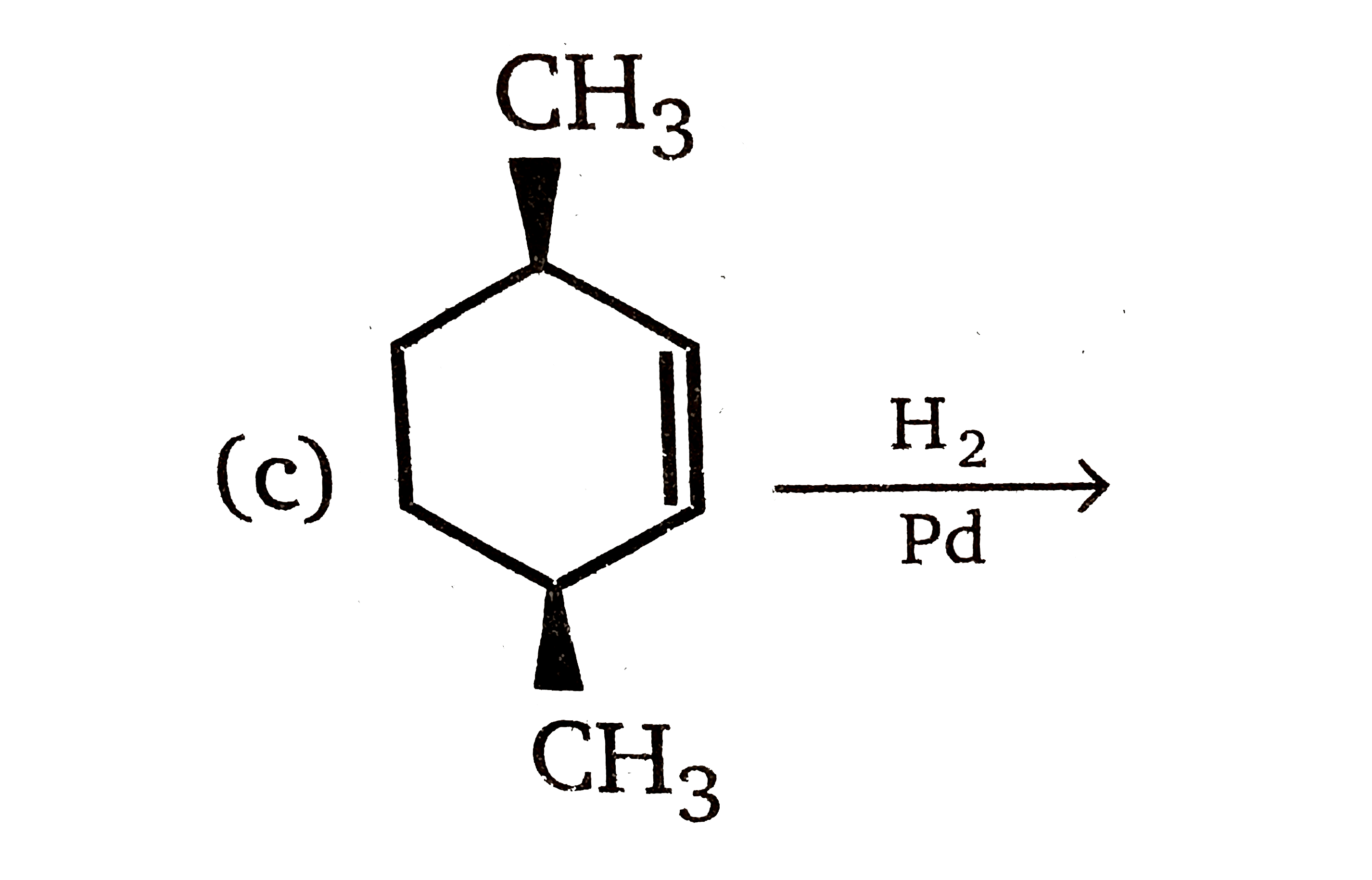The product formed during SN1 reaction is a racemic mixture.
To justify the statement that the product formed during an SN1 reaction is a racemic mixture, we can break down the explanation into several steps:
Step 1: Understanding SN1 Reaction Mechanism
The SN1 (Substitution Nucleophilic Unimolecular) reaction involves two main steps:
1. Formation of a carbocation intermediate.
2. Nucleophilic attack on the carbocation.
Step 2: Formation of Carbocation
In an SN1 reaction, the leaving group departs first, leading to the formation of a carbocation. This carbocation is typically sp² hybridized and has a trigonal planar geometry.
Step 3: Geometry of the Carbocation
The trigonal planar structure of the carbocation means that the positive charge is spread over three atoms, and the molecule lies in the same plane. This planar structure allows for the nucleophile to attack from either side of the carbocation.
Step 4: Nucleophilic Attack
Since the nucleophile can approach the carbocation from both the front and the back, there is an equal probability (50-50 chance) for the nucleophile to attack from either side.
Step 5: Formation of Stereoisomers
The attack from both sides of the planar carbocation leads to the formation of two different stereoisomers (enantiomers). These enantiomers are non-superimposable mirror images of each other, typically designated as R and S configurations.
Step 6: Resulting Racemic Mixture
Because both enantiomers are formed in equal amounts due to the symmetrical nature of the carbocation and the equal likelihood of nucleophilic attack from either side, the resulting product is a racemic mixture. A racemic mixture contains equal amounts of both enantiomers, which means it is optically inactive.
Conclusion
Thus, the product formed during an SN1 reaction is indeed a racemic mixture due to the formation of a planar carbocation that allows for nucleophilic attack from both sides, resulting in equal amounts of both enantiomers.
---
The SN1 (Substitution Nucleophilic Unimolecular) reaction involves two main steps:
1. Formation of a carbocation intermediate.
2. Nucleophilic attack on the carbocation.
In an SN1 reaction, the leaving group departs first, leading to the formation of a carbocation. This carbocation is typically sp² hybridized and has a trigonal planar geometry.
The trigonal planar structure of the carbocation means that the positive charge is spread over three atoms, and the molecule lies in the same plane. This planar structure allows for the nucleophile to attack from either side of the carbocation.
Since the nucleophile can approach the carbocation from both the front and the back, there is an equal probability (50-50 chance) for the nucleophile to attack from either side.
The attack from both sides of the planar carbocation leads to the formation of two different stereoisomers (enantiomers). These enantiomers are non-superimposable mirror images of each other, typically designated as R and S configurations.
Because both enantiomers are formed in equal amounts due to the symmetrical nature of the carbocation and the equal likelihood of nucleophilic attack from either side, the resulting product is a racemic mixture. A racemic mixture contains equal amounts of both enantiomers, which means it is optically inactive.
Thus, the product formed during an SN1 reaction is indeed a racemic mixture due to the formation of a planar carbocation that allows for nucleophilic attack from both sides, resulting in equal amounts of both enantiomers.
Topper's Solved these Questions
- SAMPLE PAPER 2023 TERM IBOOK - CBSE MODEL PAPERCHAPTER - SAMPLE PAPER 2023 TERM IEXERCISE - SECTION D
6 Videos
- SAMPLE PAPER 2023 TERM IBOOK - CBSE MODEL PAPERCHAPTER - SAMPLE PAPER 2023 TERM IEXERCISE - SECTION E
7 Videos
- SAMPLE PAPER 2023 TERM IBOOK - CBSE MODEL PAPERCHAPTER - SAMPLE PAPER 2023 TERM IEXERCISE - SECTION E
7 Videos
- SAMPLE PAPER 2022 TERM IIBOOK - CBSE MODEL PAPERCHAPTER - SAMPLE PAPER 2022 TERM IIEXERCISE - SECTION-C
5 Videos
- SAMPLE QUESTION PAPER (CHEMISTRY )BOOK - CBSE MODEL PAPERCHAPTER - SAMPLE QUESTION PAPER (CHEMISTRY )EXERCISE - SECTION D
1 Videos
Similar Questions
Knowledge Check
The product formed during the Kolbe's reaction is
ASalicylic acidB2-HydrobenzaldehydeCBenzaldehydeDResorcinolThe product formed during reaction of NH3andI2 are:
ANI3andHIBNH3,NI3andHICNH4IDNH4IandHIProduct of which of the following reactions, is racemic mixture?
A B
B C
C D
D
The product formed during the reaction of CCl3CHO and water is
View Solution
Statement 1: The product (B) formed will be a racemic mixture.
Statement 2: The above reaction is oxymercuration and demercuration, and it proceeds via the addition of D2O, according to Markovnikov's rule, and with antiregiospecificity.
View SolutionThe product formed during Hell-Volhard-Zelinsky reaction is
View SolutionThe product formed during Hell-Volhard-Zelinsky reaction is
View SolutionWhich of the following reaction will give racemic mixture ?
View Solution
